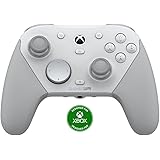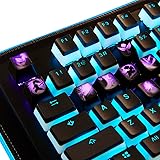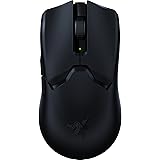Don’t Buy a Gaming Headset in 2025 Without This Ultimate Guide
Picture this: you’ve just geared up for a crucial ranked match, adrenaline pumping. You try to relay a critical enemy position, but your teammates hear only static and the crunch of your chips. Sound familiar? We’ve all been there, and as the young man in the video above rightly points out, choosing the right gaming headset in 2025 is far more complex than it seems on the surface. It isn’t just about sound; it’s about comfort, communication, and connectivity, especially with the rapid evolution of gaming technology.
The market for gaming headsets has exploded, offering an overwhelming array of choices. Making an informed decision ensures your investment pays off, enhancing your gameplay rather than hindering it. This comprehensive guide expands on the vital points raised in the video, delving deeper into what truly separates an excellent gaming headset from a regrettable purchase.
Wired vs. Wireless Gaming Headsets: Which Reigns Supreme for Your Setup?
The first fork in your headset journey involves a fundamental choice: wired or wireless. Each option brings its own set of advantages and compromises, akin to choosing between a reliable, well-paved road and a flexible, off-road path.
The Enduring Appeal of Wired Gaming Headsets
Wired gaming headsets offer a consistent, no-fuss experience that many gamers still champion. They draw power directly from your device, meaning you never face the dreaded mid-game battery depletion. This constant power flow ensures an uninterrupted connection.
Furthermore, wired connections typically deliver superior audio fidelity due to less signal interference and zero latency. For competitive gamers where every millisecond counts, this direct pipeline to sound can provide a tangible edge. While cable management can be a minor annoyance, the sheer reliability and often lower price point make wired options compelling.
Embracing the Freedom of Wireless Gaming Headsets
On the other hand, wireless gaming headsets represent the pinnacle of convenience and mobility. Imagine getting up for a drink or stretching without having to remove your headset or untangle yourself from cords. This freedom is a game-changer, allowing you to stay connected to your team chat or game audio no matter where you are in the room.
Modern wireless technology has also dramatically improved, with 2.4GHz USB dongles offering near-zero latency, making them indistinguishable from wired connections for most users. While battery life is a consideration, many premium models provide extensive playtime and quick-charge features. Bluetooth connectivity, while often having slightly higher latency, is excellent for mobile gaming or connecting to multiple devices without needing a dongle.
The Power of Multi-Platform Gaming Headsets: Seamless Experience Across Devices
As the video highlights, owning multiple gaming platforms is increasingly common. A headset that seamlessly transitions between your PS5, PC, Xbox, Nintendo Switch, or even your mobile device offers incredible value. Think of it as having a universal adapter that works everywhere, rather than a separate charger for each gadget.
Unlocking Universal Compatibility
A truly multi-platform gaming headset often features a combination of connection types. The ubiquitous 3.5mm jack remains a standard for broad compatibility across consoles, PCs, and mobile devices. USB-A and USB-C connections are increasingly prevalent, offering digital audio and microphone inputs, often with better sound processing capabilities.
Proprietary wireless dongles, specifically designed for ultra-low latency, are common with PC and PlayStation headsets. Xbox, however, often uses its own wireless protocol, meaning not all wireless headsets will work with it. Checking specific compatibility charts for your desired headset becomes crucial, ensuring your investment truly serves all your gaming needs.
Beyond physical connections, consider software compatibility. Some advanced gaming headsets come with companion software for custom EQ settings, virtual surround sound, and microphone adjustments. Ensure this software is compatible with your primary platform, especially PC, to unlock the headset’s full potential.
Beyond the Basics: Microphone Quality in Gaming Headsets
A clear microphone is arguably as vital as crisp audio output in team-based games. A “crappy mic,” as succinctly put in the video, can turn you into an auditory phantom, your important callouts lost in a haze of static and background noise. It’s like trying to communicate through a thick, sound-muffling wall; your message simply doesn’t get through clearly.
What Makes a Microphone Great for Gaming?
Good microphone quality starts with clarity and noise rejection. Look for features like noise-canceling technology, which actively filters out ambient sounds like keyboard clicks, fans, or even the subtle rumble of a washing machine. This ensures your voice cuts through distinctly, making you sound professional and understandable.
Different mic designs also play a role. Boom microphones, often found on dedicated gaming headsets, sit closer to your mouth, capturing your voice more directly and with less interference. Retractable or detachable boom mics offer versatility, allowing you to tuck them away or remove them entirely when not in use. Some high-end headsets even integrate AI-powered noise reduction for unparalleled vocal fidelity, making even snacking during a game less disruptive.
Many gaming headset brands now tout “Discord Certified” microphones. This certification indicates that the microphone meets specific standards for clarity and noise reduction, assuring you of excellent voice communication on one of the most popular gaming platforms. It’s a good benchmark to look for when evaluating mic performance.
Elevating Your Gaming Experience: Essential Headset Features Beyond the Core Three
While wired/wireless, multi-platform support, and mic quality form the bedrock of your decision, a truly exceptional gaming headset often excels in several other crucial areas. These elements transform a functional device into an indispensable part of your gaming arsenal.
Unparalleled Comfort for Extended Sessions
Gaming sessions can stretch for hours, and an uncomfortable headset quickly becomes a burden. Comfort is paramount, acting like a second skin rather than a vise on your head. Key factors include the weight of the headset, the clamping force it exerts, and the materials used for the earcups and headband.
Look for memory foam ear cushions covered in breathable fabrics like velour, which prevent your ears from overheating and sweating. Leatherette can offer better sound isolation but might get warmer. A well-padded, adjustable headband distributes weight evenly across your head, avoiding pressure points. Testing the fit is often the best approach, as head shapes vary dramatically, much like trying on shoes for the perfect fit.
Immersive Sound Quality and Audio Fidelity
Beyond just hearing game sounds, true immersion comes from the richness and detail of the audio. Driver size (typically 40mm or 50mm) influences bass response and overall sound power. A wider frequency response range (e.g., 20Hz-20kHz) indicates the headset can reproduce a broader spectrum of sounds, from the deepest explosions to the crispest footsteps.
Virtual surround sound technologies, such as 7.1 surround sound, DTS Headphone:X, or Dolby Atmos, create a three-dimensional soundscape. This spatial audio allows you to pinpoint enemy locations by sound alone, providing a significant tactical advantage. It’s like turning your two ears into a radar, allowing you to perceive threats from every direction, not just left or right.
Build Durability and Design Aesthetics
A gaming headset endures a lot of handling, drops, and general wear and tear. Durability is a key consideration for longevity. Headsets constructed with robust materials like aluminum frames or high-quality plastics will withstand the rigors of daily gaming better than flimsy alternatives.
Consider features like swiveling earcups for flat storage, reinforced cables (for wired models), and sturdy hinge mechanisms. While aesthetics are subjective, a well-designed headset often reflects quality craftsmanship. Subtle RGB lighting or a sleek, minimalist design can also enhance your overall setup without being overly flashy.
The Open-Back vs. Closed-Back Debate
This is a more technical distinction but crucial for audio connoisseurs. Closed-back gaming headsets completely enclose your ears, creating excellent sound isolation. This means less game audio leaks out and less external noise gets in, perfect for competitive play or noisy environments. It’s like being in your own private sound booth.
Open-back headsets, conversely, have earcups that are open to the outside. This design allows for a much wider soundstage, making audio feel more natural and spacious, almost as if the sound is coming from outside the headset. While they offer less isolation and can bother others nearby, the immersive, airy sound can be incredibly appealing for single-player games where immersion is key. It’s a choice between complete isolation and a more natural, expansive sound field.
Making Your Choice: Finding the Perfect Gaming Headset for Your Budget
Ultimately, the best gaming headset for you balances features, performance, and budget. While premium headsets offer every bell and whistle, excellent options exist across all price points.
Start by prioritizing the features most important to your gaming style and platform setup. Do you value ultimate freedom, or is raw audio quality and reliability your top concern? By methodically evaluating your needs against the expansive market offerings, you’re well on your way to securing a gaming headset that truly elevates your experience in 2025 and beyond.









